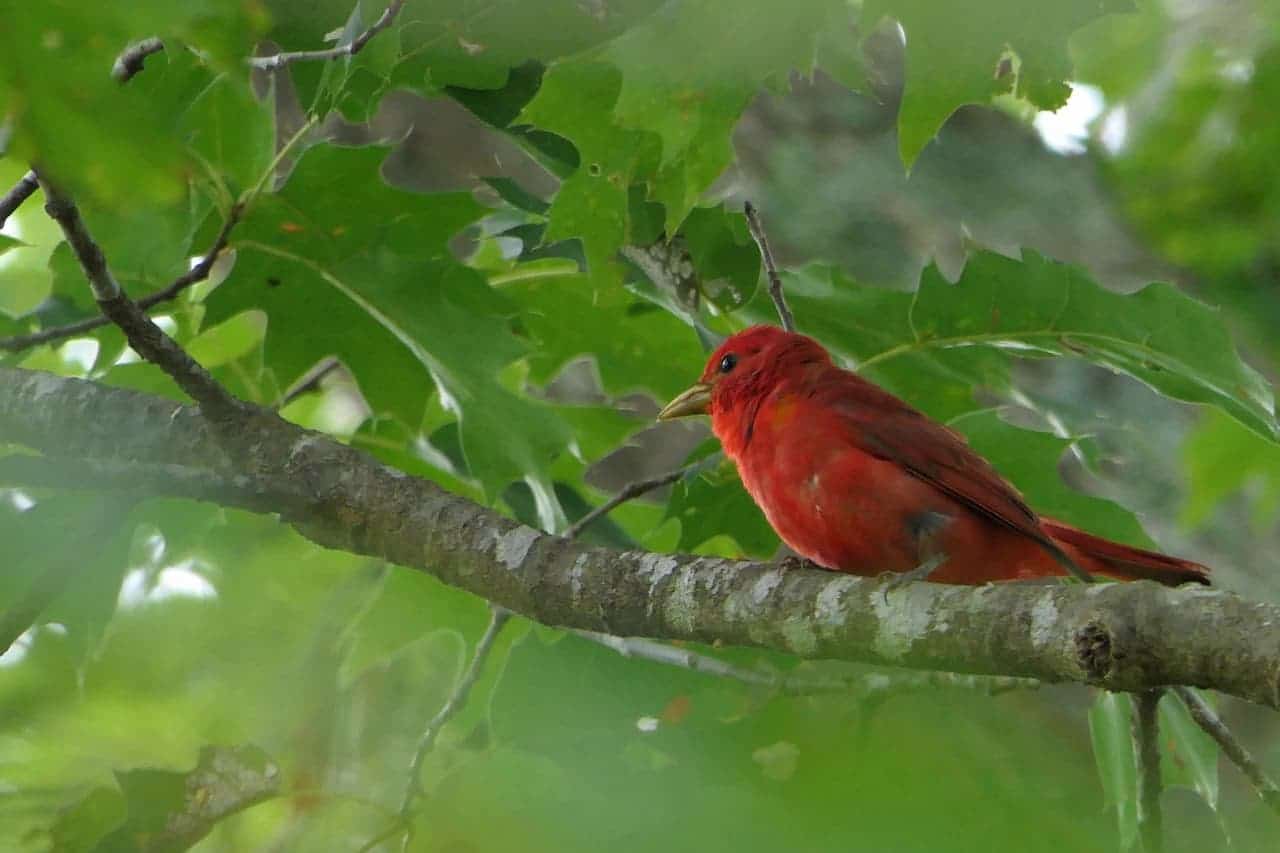Hummingbirds found in South Dakota, USA
Hummingbirds found in the USA (by U.S. State) … Canada … Mexico … Puerto Rico … Jamaica … Honduras
Hummingbird Information … Hummingbird Species Photo Gallery
Costa’s Hummingbirds, Calypte costae – Rare / Accidental – Only 3 Official State Records
Males can easily be identified by the glossy purple crown and long, conspicuous throat feathers that project markedly down the side of the throats, giving it an elongated “moustache” appearance. The back is metallic green.
Females have greyish-green crowns (fop of the head) and backs. The chin and the plumage below are whitish, except for some black spotting on her throat. Her flanks are buffy-colored. She has a dark tail with white tips on the outer tail feathers.
They resemble the Anna’s Hummingbirds, but the male’s gorget (throat feathers) is longer than that of the Anna’s.
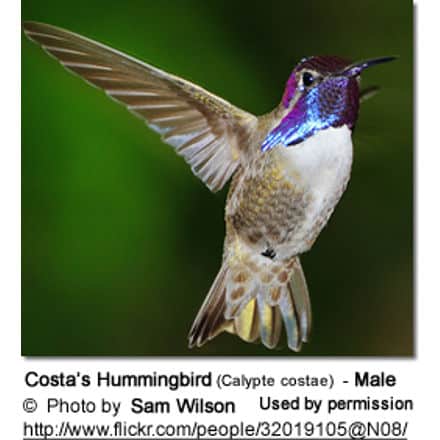
Magnificent or Refulgent Hummingbirds (Eugenes fulgens) – Rare / Accidental – Only 3 Official State Records
They are nearly twice as large as any other hummingbird species found in this State, and can often be identified by their size alone.
The male has a metallic green throat and a black chest. His forehead and crown are purple and the back is dark green.
The female plumage is less bright. Her chest is solid grey. Her back and crown are olive green. Her tail feathers are pearl-grey tipped.
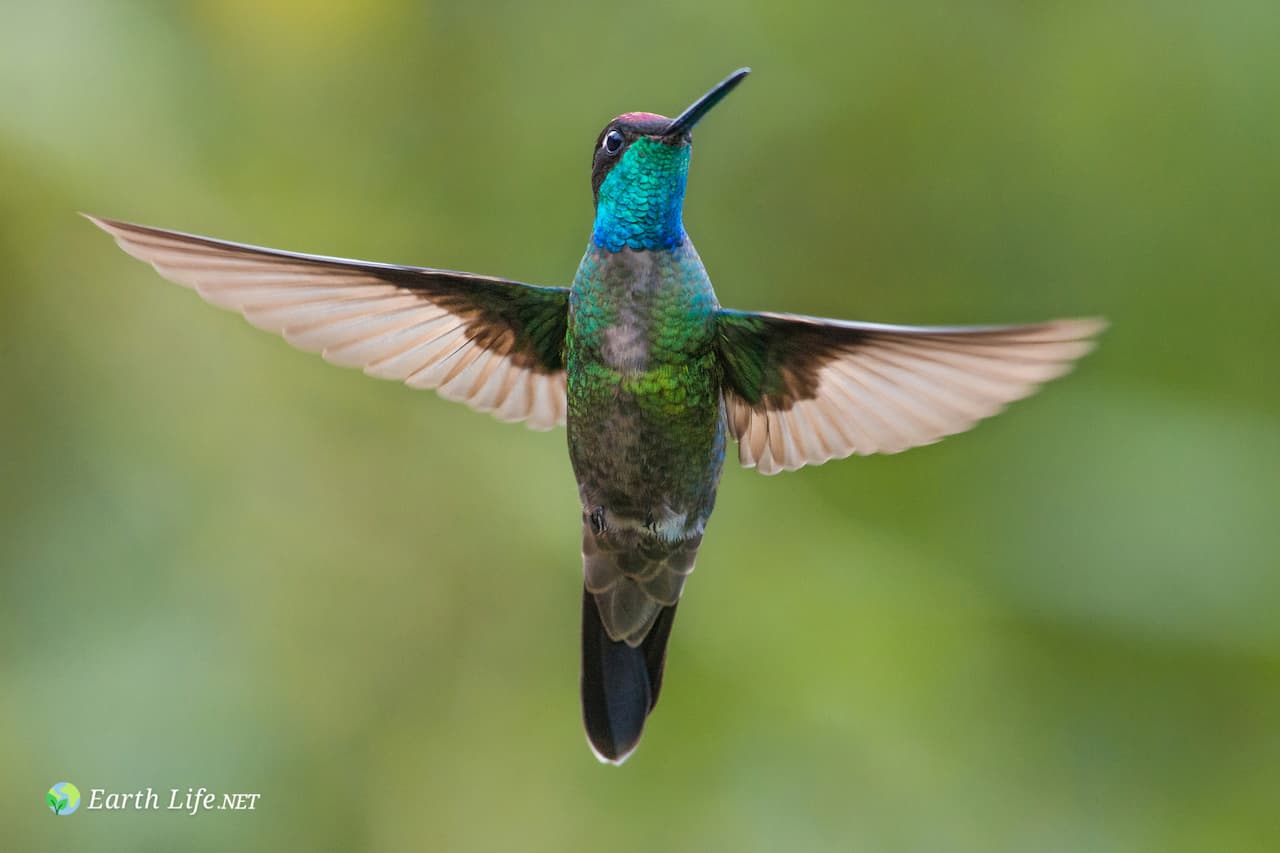
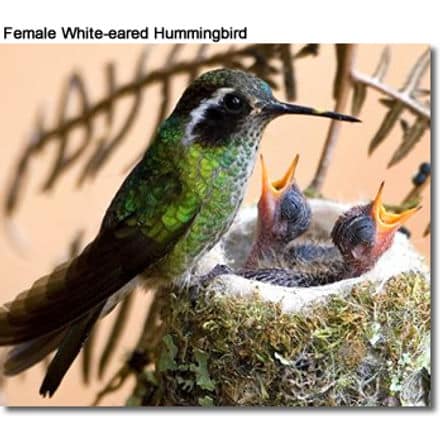
Anna’s Hummingbird, Calypte anna – Rare / Accidental – Only 3 Official State Records
One of the larger and the most vocal hummingbirds in the United States, where it is the only species to produce a song; specifically the males produce a complex series of scratchy noises, sounding like a sharp “chee-chee-chee; when moving from flower to flower, they emit toneless “chip” vocalizations. All other hummingbirds in the United States are mostly silent.
They are well known for their territorial behavior; the male makes elaborate dive displays at other birds and sometimes even at people. At the bottom of their dives, they produce high-pitched loud popping sounds with their tail feathers.
Males have glossy dark rose-red throats and crowns, which may appear black or dark purple in low light. The underside is mostly greyish; and the back metallic green.
Females have light grey chests with white and red spotting on the throat, greenish back and white tipped tails.
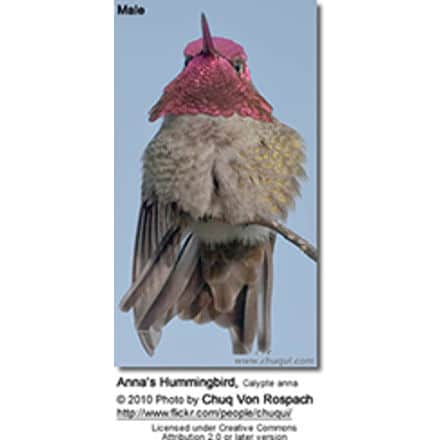
Ruby-throated Hummingbirds (Archilochus colubris) – Rare. Only 3 State Records. They usually arrive in May for the breeding season and leave in or around September for their wintering territories. Males are usually the first to arrive and the first to depart. The females and the young usually follow about two weeks later.
The male has a ruby-red throat, a white collar, an emerald green back and a forked tail.
The female has a green back and tail feathers that are banded white, black and grey-green.

Rufous Hummingbirds (Selasphorus rufus) – Non-breeding visitor.
These hummingbirds are usually found in gardens and at feeders. These birds are fearless, and are known for chasing away other hummingbirds and even larger birds, or rodents away from their favorite nectar feeders and flowers. Very aggressive, they often will dominate other hummingbirds, and will even chase away larger birds and small rodents away from their preferred feeding locations.
Males can easily be identified by their glossy orange-red throats.
Females have whitish, speckled throats, green backs and crowns, and rufous, white-tipped tail feathers.
Similar to the Ruby-throated Hummingbird (id assistance below) and the Extremely similar to Allen’s Hummingbird. Females similar to female Calliope Hummingbird
Rufous Hummingbird versus the similar Ruby-throated Hummingbird (Identification)
Calliope Hummingbirds (Stellula calliope) – Very rare, non-breeding visitors. Only a handful of records in the state.
The smallest breeding bird in North America. They are most easily confused with the Rufous Hummingbirds and the Broad-tailed Hummingbird.

Broad-tailed Hummingbirds (Selasphorus platycercus) – Only 3 Official State Records.
Males can most easily be identified by their iridescent, rose-red throats, white chest feathers and metallic green back and crown and their rounded tails. The males’ tails make whistling noises in flight.
Females lack the flashy throat patch of the male and are mostly pale below. Their white-tipped outer tail feathers are rust-colored close to the body and blackish in the center; the tail feathers in the center range from green to blackish.
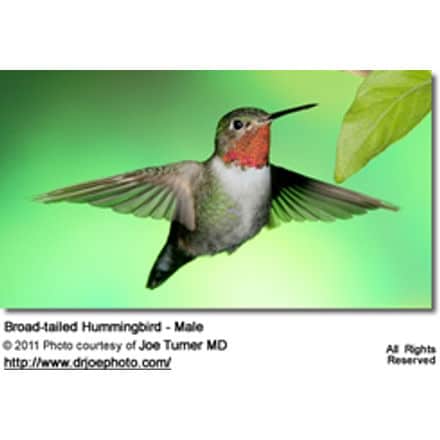
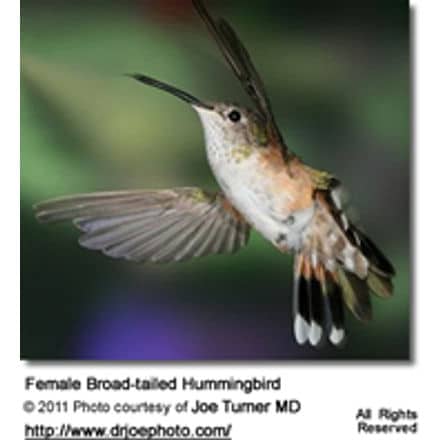
Is it a Hummingbird or an Insect?
The Hawk Moths (often referred to as “Hummingbird Moth”) is easily confused with hummingbirds, as they have similar feeding and swift flight patterns. These moths also hover in midair while they feed on nectar.
Moths have a couple of sensors or “antennas” on top of the head, which are key identifiers.


